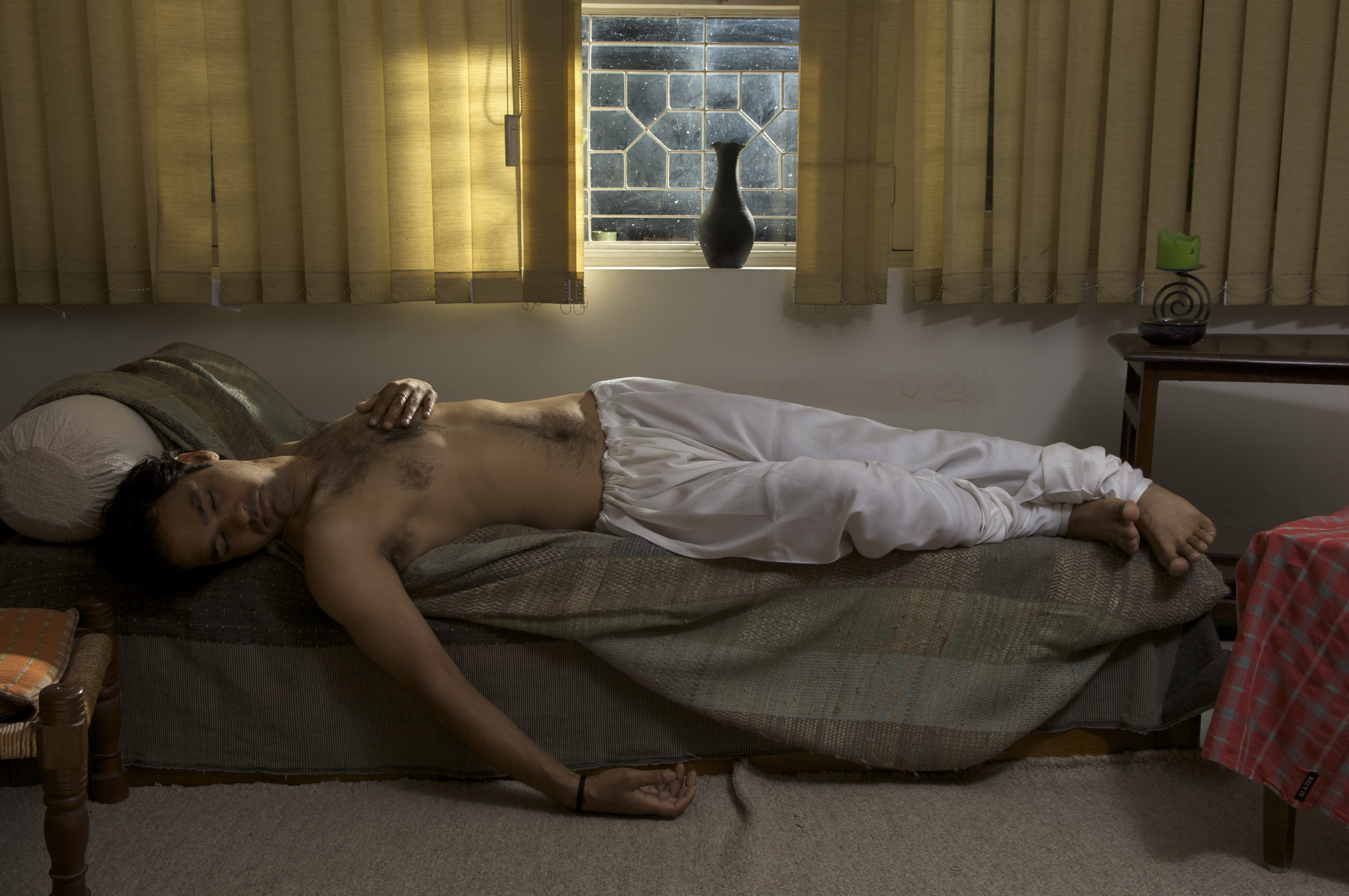


Sunil Gupta, Untitled #7, 2008, from the series The New Pre-Raphaelites. Courtesy the artist and Hales Gallery, Stephen Bulger Gallery and Vadehra Art Gallery © Sunil Gupta. All Rights Reserved, DACS 2020
Sunil Gupta’s retrospective exhibition, laid out more or less chronologically over two floors of the Photographers’ Gallery, presents a narrative arc through the last 45 years of societal change. It teaches a salutary lesson about the process of that change, and the possible fragility of gains made. While it is a highly personal account of a life that began in Delhi and landed finally in London, via Montreal and New York, Gupta’s story encompasses many other significant transitions. Folded into the various series of works here are expressions of the migrant experience, the legalisation of homosexuality in India, the AIDS crisis, and even the shift from analogue to digital photography.
A family move took Gupta from India to Canada in 1969, and a love affair propelled him from there to New York and then on to London. As a young man exploring his identity, the expectations of a relatively traditional Indian family sit in parallel with the ‘family’ he finds within the gay community. Christopher Street in New York in 1976 was a unique scene, a euphoric time that came after the Stonewall riots of 1969 and before the AIDS crisis of the 1980s. Having grown up in India in a film culture, it was natural for Gupta to pick up his camera to record the daily parade.
Street photography was like cruising, and flamboyant personal display was an essential part of that scene. In those days there were no ethical dilemmas around taking someone’s image. In contrast to today’s digital technology, Gupta couldn’t know what images he had captured until the film in his SLR camera had been developed and processed. He describes the excitement of anticipation back then – waiting to see what he had got.
Right from the beginning, the radical politics of the gay liberation movement was very present: “The general mood on Christopher Street was very positive. I was very “out and proud” and the whole political underpinning of gay liberation had been about the death of the family – we were going to destroy family-based capitalism through promiscuity. It was very joyful.”
London in 1978 was far from joyful. The relationship that had brought him here came to an end, and for the first time Gupta found himself experiencing overt racism. It was the era of ‘Paki-bashing’; London was down-at-heel and on the threshold of the turbulent Thatcher years. In his recording of this moment, Gupta’s eye betrays his empathy with the migrant experience, capturing black and Asian families in the streets, the downbeat palette of greys emphasising strain and tension. Studying photography at the RCA then, at a moment when the medium was only just moving from being considered a ‘trade’ to being acknowledged as an art form, the only history of photography that was taught was exclusively European and modernist.
In 1987 Gupta travelled back to his hometown Delhi. There, homosexuality was still illegal – a legal legacy of British colonial rule – so there was no ‘gay scene’ and it was too dangerous to photograph the clandestine trysts of gay men. Instead Gupta moved to set up staged images of pairs of men, their faces cropped out or turned away from the camera. Accompanying these images he incorporates captions with text from recordings he made in the process: “Everyone is married. Mother wants me to get married. I probably will, there is the family name and respect to consider.” The inclusion of text underlines the way language has been important through the period, when the use and connotations of terms like ‘black’ and ‘queer’ changed radically.
Back in London, Gupta turned his back on the commercial art world, such as it was then, and instead spent years working on committees for the GLC (Greater London Council) under Ken Livingstone, contributing to debate and the development of policy for the LGBTQ community. In the mid 1990s, Gupta was diagnosed HIV positive. In his series of photographs that give the exhibition its title, Gupta uses his own image, often naked, to place the illness in the public realm. It was an act of bravery to make himself vulnerable in this way, but also a way of confronting the fear and pain. The series comprises diptychs that juxtapose self-portraits, the medicalised body, with shots of shuttered gay sex clubs and bathhouses.
The last series here is a project commissioned by the Pompidou Centre in 2010. Sun City is inspired by Chris Marker’s 1962 masterpiece La Jetée. The photographs drip with saturated colour and synthesise the overt sensuality of masculine display from the Christopher Street era, with the theatrical staging of the Exiles series. Like stills from a movie that was never made, the series contrasts a romantic relationship that plays out conventionally in daylight with the subterranean night-time adventures of the protagonist on the gay scene. The nuclear apocalypse of the original film is here replaced by the HIV crisis.
It is very moving to be reminded of the struggles that lead to the acceptance of difference in society today. Sunil Gupta’s work communicates the political through the personal in a way that brings home the reality of everyday activism lived by so many gay men and women for decades. It is a complex story, told here with quiet urgency.
Caroline Douglas
Director